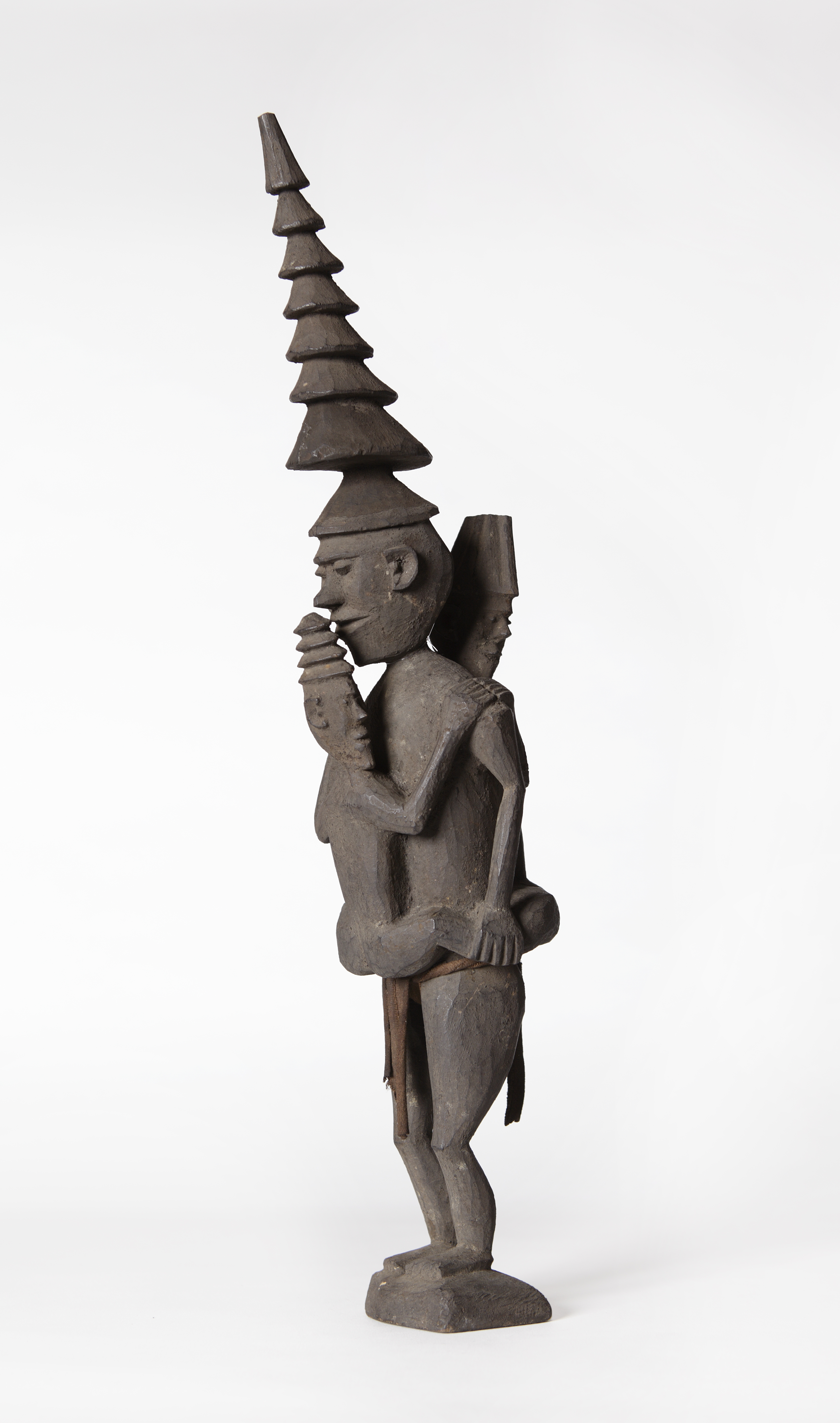The Sculptures of Atauro Island
A woman puts on goggles, takes a spear and in skirt and thongs, free dives into a turqoise reef off Atauro Island north of Dili. She is one of the women-only divers known as the ‘mermaids’ of Atauro, a tiny island population 743 kilometres from Darwin, with an ancient kinship to the sea and an extraordinary sculpture tradition that honours it.
 Long sold as tourist souvenirs in East Timor’s capital, these striking, elongated wood sculptures are now the subject of a world-first exhibition at Charles Darwin University (CDU) Art Gallery. The Sculptures of Atauro Island lifts the lid on the animistic origins of these carvings and their unique adaptation to the modern world.
Long sold as tourist souvenirs in East Timor’s capital, these striking, elongated wood sculptures are now the subject of a world-first exhibition at Charles Darwin University (CDU) Art Gallery. The Sculptures of Atauro Island lifts the lid on the animistic origins of these carvings and their unique adaptation to the modern world.
Charting more than a century of the tradition, the gallery has assembled rare figurines and masks from private international collections and museums here and in East Timor.
Documentaries screen alongside the art, putting it in context and explaining the mythical traditions of the local people, such as David Palozón and Enrique Alonso’s documentary Wawata Topu – Timor-Leste’s Mermaids.
CDU Art Gallery curator Joanna Barrkman first came across Atauro Island’s sculptures in Dili in 2002, when she saw a man hawking wooden figures to aid workers and UN staff outside the Tropical Bakery Cafe. He was Antonio Soares, a master carver, who travelled by boat over the Wetar Strait where he would spend days looking for customers.
“I thought they were very elegant sculptures and they’re very distinctive,” says Barrkman, an expert in Southeast Asian art.
“I was aware that wood sculpture had virtually died out in the western part of the island because there’s been a change in recent decades in architectural materials. To some extent that’s the case in East Timor (as well), but Atauro’s a little island, and somehow being an island culture they have managed to preserve this tradition.”
 That tradition has transformed from one that worshiped ancient fertility deities and ancestors, to what is now a small industry in its own right – which a small but dedicated number of young men are choosing as a livelihood. A contemporary example of a sculpture shows a fine-featured diver, in thongs and glass goggles, complete with miniature lenses.
That tradition has transformed from one that worshiped ancient fertility deities and ancestors, to what is now a small industry in its own right – which a small but dedicated number of young men are choosing as a livelihood. A contemporary example of a sculpture shows a fine-featured diver, in thongs and glass goggles, complete with miniature lenses.
“Antonio is a master carver but there’s also younger men that are carving,” says Barrkman.
“There’s actually a collective from Atauro Island who are based in Dili, and they are producing sculptures and selling them on the esplanade. It’s definitely become a contemporary art practice.”
Popping out of the ocean just 30 kilometres from Dili, Atauro Island looks magical from the mainland, says Barrkman, but is in fact incredibly arid and was used as a prison island by the Portuguese and Indonesians. Its 8,000 people survive on subsistence farming and fishing.
“People used to navigate the Wetar Strait from Atauro to Dili, before there were ferries. That’s a very dangerous and deep body of water,” says Barrkman.
“There’s a lot of mythology around that crossing…beliefs in mermaids and mermen and eels, and the power of those creatures to take people under water, to drown,” says Barrkman.
Bringing to life ancient myths and the challenges of a new nation, The Sculptures of Atauro Island unveils a living, breathing art form to a new and lucky Darwin audience.
Images
Thumbnail: Ancestor figurines, female and male (detail), Artist unknown, Atauro Island, Timor-Leste, mid-late 20th century, wood, devil tree (Alstonia scholaris) with cloth. female: 26.5 H x 5 W x 5 D cm, male: 30 H x 6 W x 5 D cm; National Collection of Timor-Leste, NCTL00234 and NCTL00235
Banner: Atauro Island; image by Joanna Barrkman, 2007
Top: Man carrying children, Antonio Soares, Maquili, Atauro Island, Timor-Leste, late 20th century, white hardwood (Wrightia javanica), initim (AD), ai lalar (T) with cloth, 51 H x 11.5 W x 10 D cm; Maria do Céu Lopes da Silva Collection, CF0048
Bottom: Ancestor bust, Baku-Mau, Artist unknown, Atauro Island, Timor-Leste, mid-20th century, wood, white gum (Eucalyptus alba), 138 H x 11.5 W x 10 D cm; National Collection of Timor-Leste, NCTL00351
